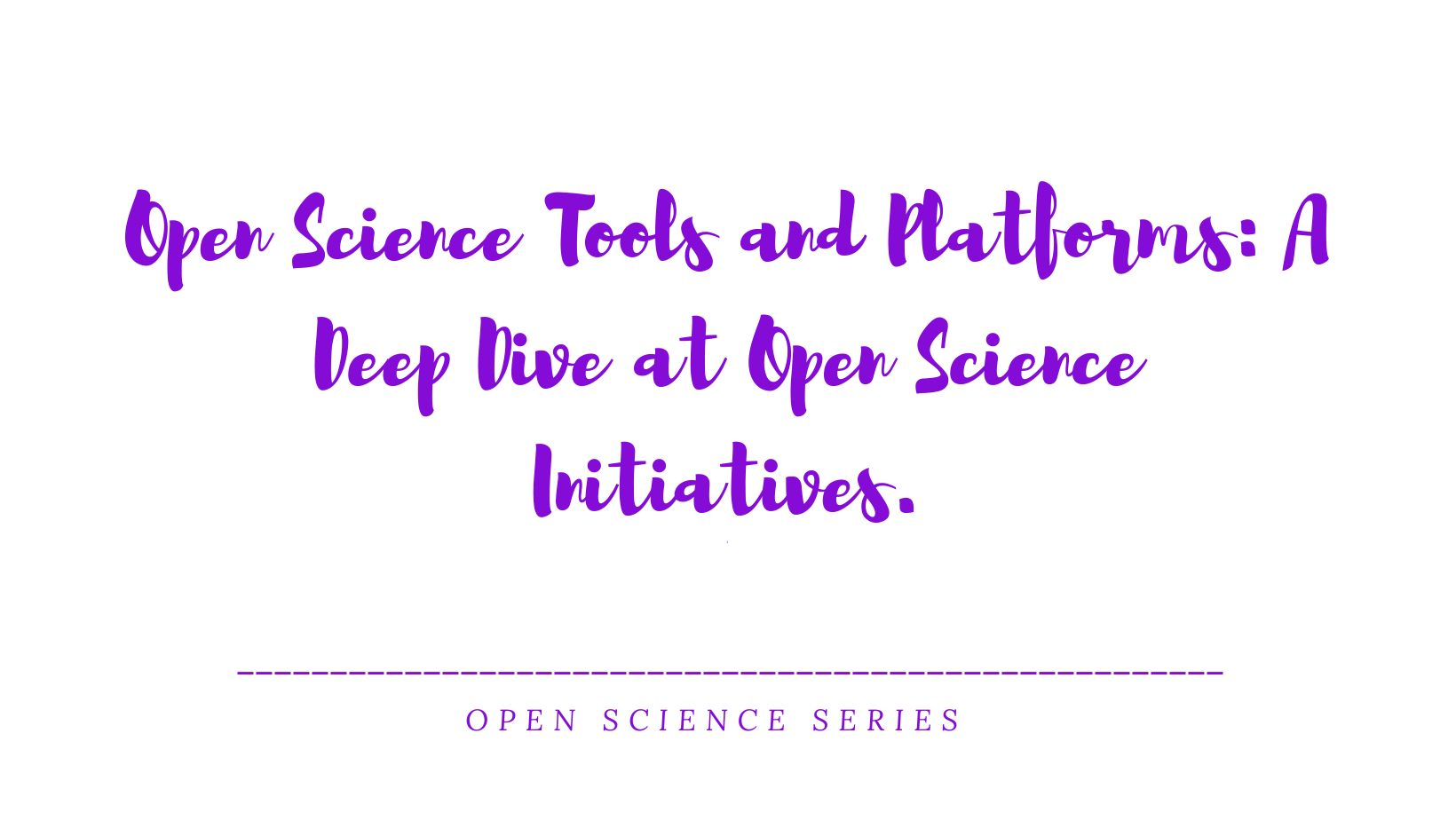Open Science Tools and Platforms: A Deep Dive at Open Science Initiatives.
 Zainab Ikeoluwa
Zainab Ikeoluwa
Imagine a world where scientific research is open to everyone, and anyone can access the data, code, and publications that form our knowledge. Developers and researchers can collaborate more efficiently and faster. The public can participate in science and development. That's the promise of Open Science.
Open Science Initiatives are increasingly gaining traction.
As a case study, developers and researchers may be more interested in initiatives focusing on code, data sharing, and reproducibility. At the same time, the public may be more interested in industries that allow them to participate in scientific research, develop skills by contributing to projects, and use collective human intelligence, such as inbuilt or developed talents like writing, hobbies, and more.
Developers, researchers, scientists, software engineers, open source advocates and developers, and anyone interested in learning about Open Science Initiatives, Welcome.
At the end of this article, the reader will understand the different Open Science Initiatives and the categories of other projects under various initiatives.
Understanding Open Science Initiatives
In my last article, I explained Open Science as a practice that fosters innovation, collaboration, and creativity. I also said Open Science Initiatives as movements that gather people to promote openness.
Open Science Initiatives are a set of practices and policies aimed at increasing the accessibility, transparency, and reproducibility of work, whether research, product content, or code.
Types of Open Science Initiatives
Here are different open science initiatives cutting across science and technology.
👉Open-access Publishing
This initiative advocates and supports the publication of technical articles and scientific write-ups under an Open-access Model. An Open-access Model makes these publications freely accessible to the public without paywalls.
In short, it is 'access for free.'
Examples;
- Hashode allows free access to technical content
- Frontiers enable free access to published research papers
- PLOS ONE allows free access to all published articles.
👉 Open Source Software
This initiative promotes developing, remodeling, and using Open-Source Software in scientific research and development. Open source software adoption brings about the FOSS (free and open source software) Initiative, where the software is freely available, allowing developers and researchers to access, modify, and distribute the software's source code.
This softwares cuts across operating systems, web browsers, frameworks, design tools, machine libraries, etc.
Examples;
- Linux, a free, open-source operating system.
- TensorFlow, an open-source machine learning library for model development and deployment.
- Node.js, an open-source JavaScript runtime environment that enables developers to build efficient network applications.
👉 Open Data Initiatives
This initiative encourages developers, engineers, and researchers to share their codes, findings, and data openly, allowing others to access, reuse, and analyze them for further development or to validate the results.
Examples;
- The Human Genome Project, a collaborative effort that made the complete human genome sequence available. This genetic data is accessible for individual and collective research.
- Kaggle, a platform that hosts open datasets for machine learning and data science projects for training, project development, and portfolio building.
- GitHub, an open-source web-based platform that facilitates version control, collaboration, and sharing of code repositories.
👉 Open Hardware
These initiatives promote sharing Open-source hardware designs and specifications. Thus enabling engineers, scientists, and researchers to access, reproduce, and modify scientific equipment, instruments, and tools.
Examples;
- Arduino, an open-source prototyping platform. It enables users to build interactive electronic projects.
- The Raspberry Pi with AIY (Artificial Intelligence Yourself) Kit allows users to experiment with AI applications and build their AI-powered projects.
- JetBot, a robot kit powered by the NVIDIA Jetson Nano. It's designed to facilitate hands-on learning and experimentation with AI and robotics.
👉 Citizen Science Projects
People are at the core of Open Science
This initiative engages the public in scientific and software research and development. It involves non-professional enthusiasts, advocates, and volunteers in data collection, analysis, and advocacy.
These initiatives leverage the crowd's intelligence to contribute to global research. This collective intelligence ranges from hobbies to day-to-activities.
Examples;
- Foldit, a puzzle-solving game that allows players to contribute to protein folding research.
- Galaxy Zoo, a project that engages the public in classifying galaxies based on astronomical images.
- iNaturalist, a community-driven platform for recording and sharing biodiversity observations.
👉 Open Educational Resources
Open Education Resources (OER) are learning materials that are freely available to the public. By removing barriers to learning, OER initiatives strive to make education more accessible and inexpensive. These resources can be available under an open license, allowing educators and students to adapt, alter, and share them.
Examples;
- Khan Academy offers free online courses.
- The OpenStax Project provides free textbooks for college-level courses.
- MIT OpenCourseWare provides free access to course materials from the Massachusetts Institute of Technology (MIT).
Other Open Science Initiatives;
- Open lab Notebooks
- Open Source Drug Discovery
- Open Infrastructure, and so on.
Summary
These initiatives showed ways access is essential to knowledge building, creativity, and innovation. Getting involved in these initiatives and adopting the policies empowers the global community.
🤔How to adopt Open Science in our day-to-day lives
- Making your product or source code public
- Taking public reviews of your users to understand their perspectives,
- Contributing to a project,
- Volunteering and also advocating for these practices.
- Using any of these Initiatives platforms like GitHub
I hope you enjoyed reading this article as much as I wanted to write it. Do you have any comments or questions? Please share in the comment section. Thank you.
Resources
Subscribe to my newsletter
Read articles from Zainab Ikeoluwa directly inside your inbox. Subscribe to the newsletter, and don't miss out.
Written by

Zainab Ikeoluwa
Zainab Ikeoluwa
Hi, Nice to meet you 😊 Just a little something to leave you with; “You don’t start out writing good stuff. You start writing crap and thinking it’s good stuff, and then gradually; you get better at it. ” ―Octavia E. Butler.